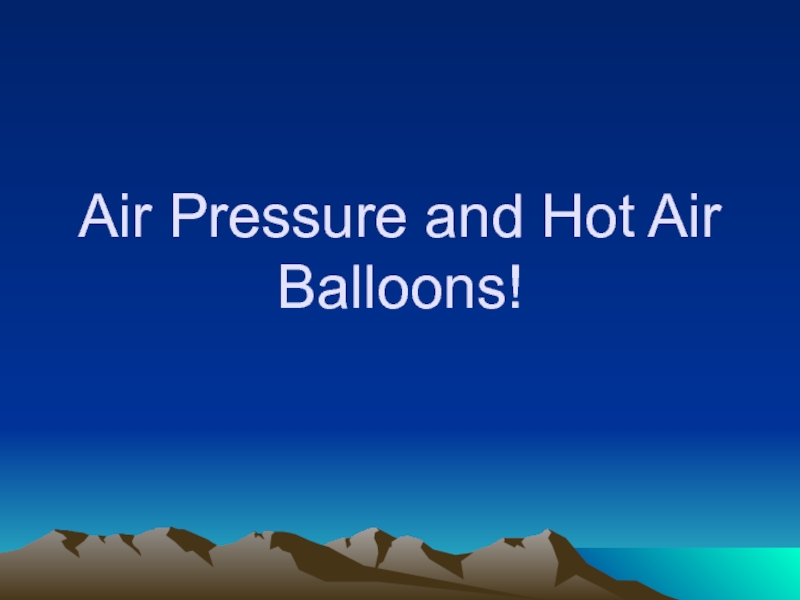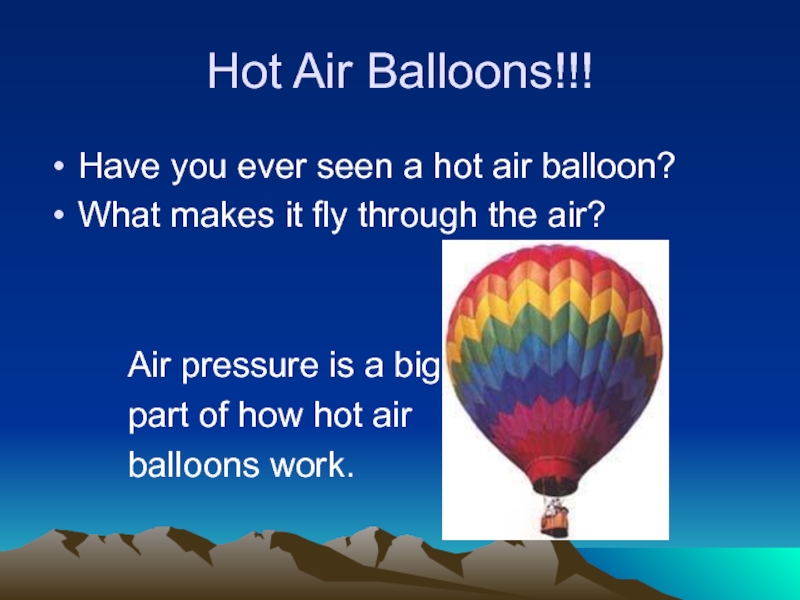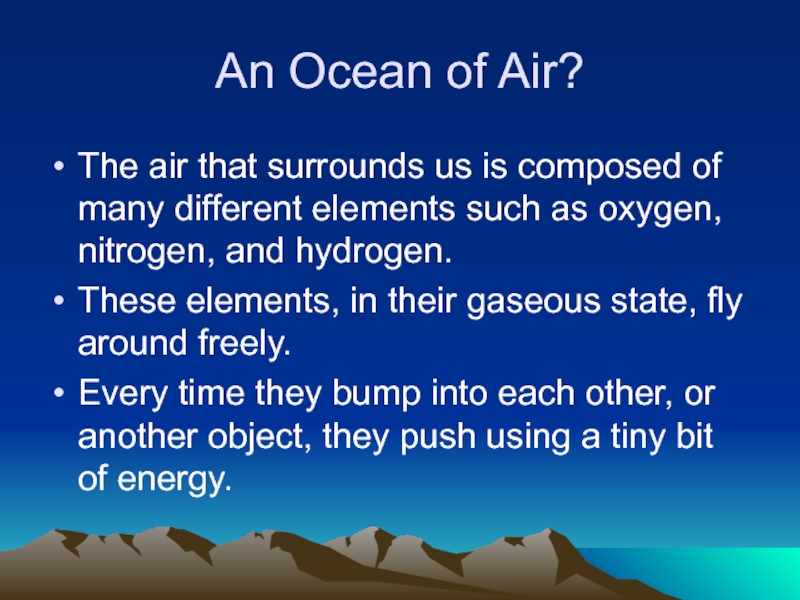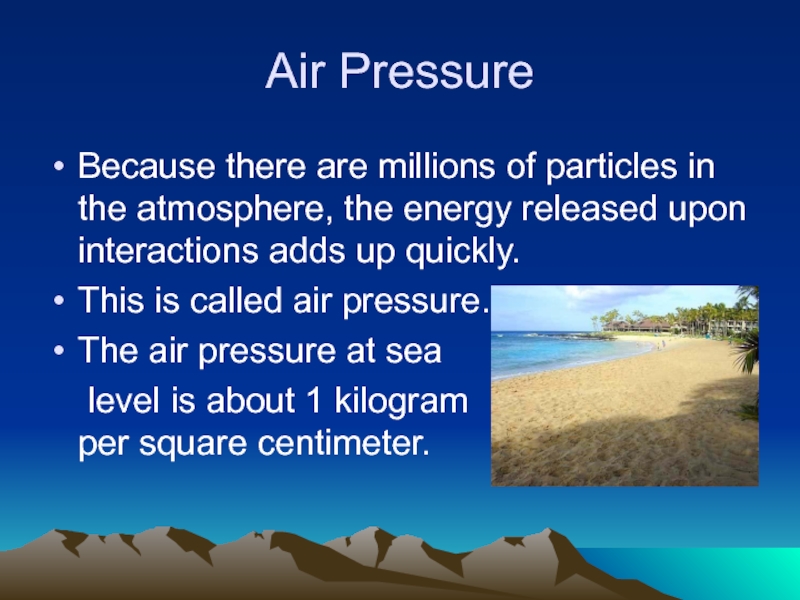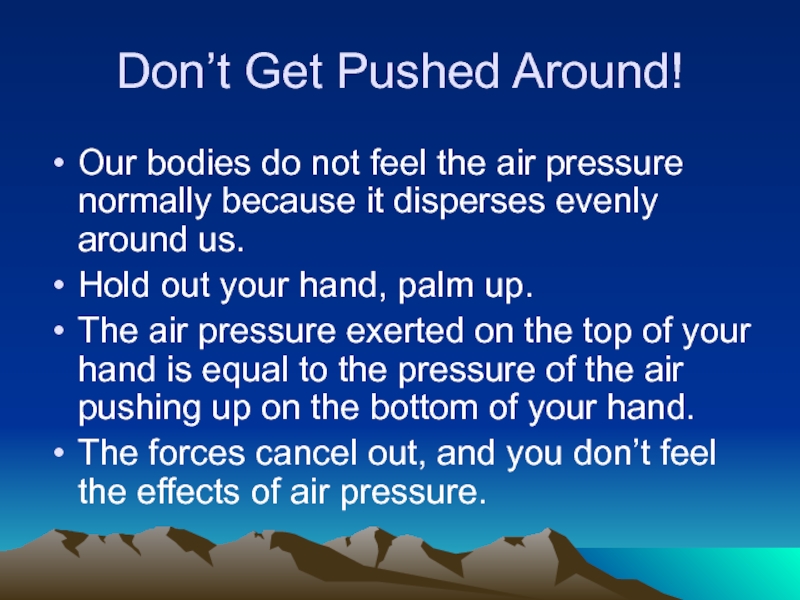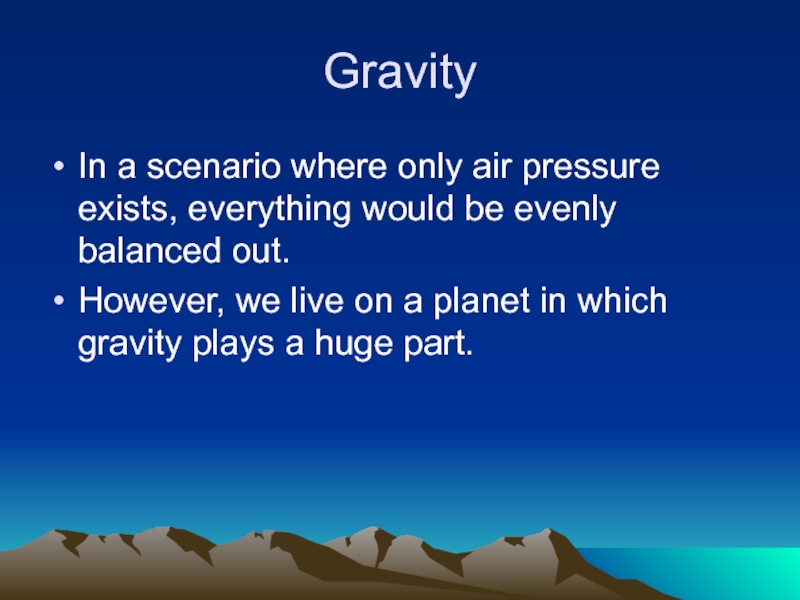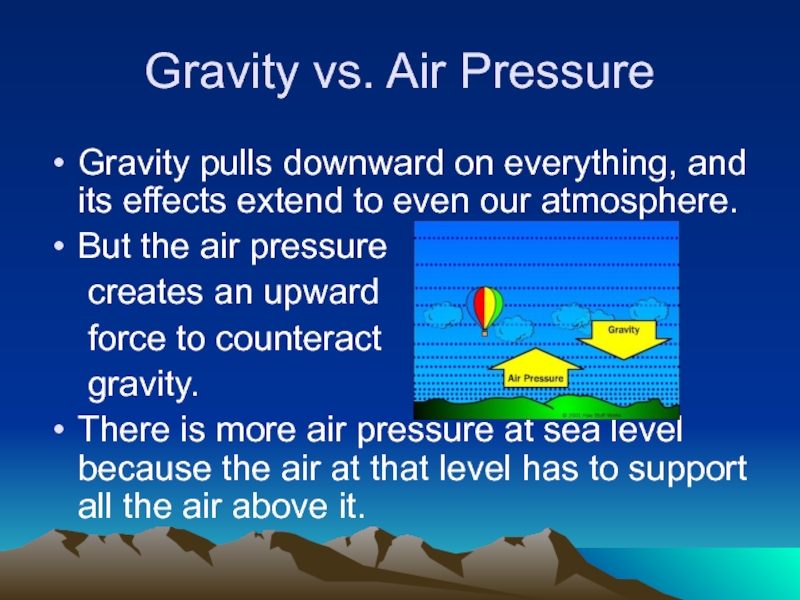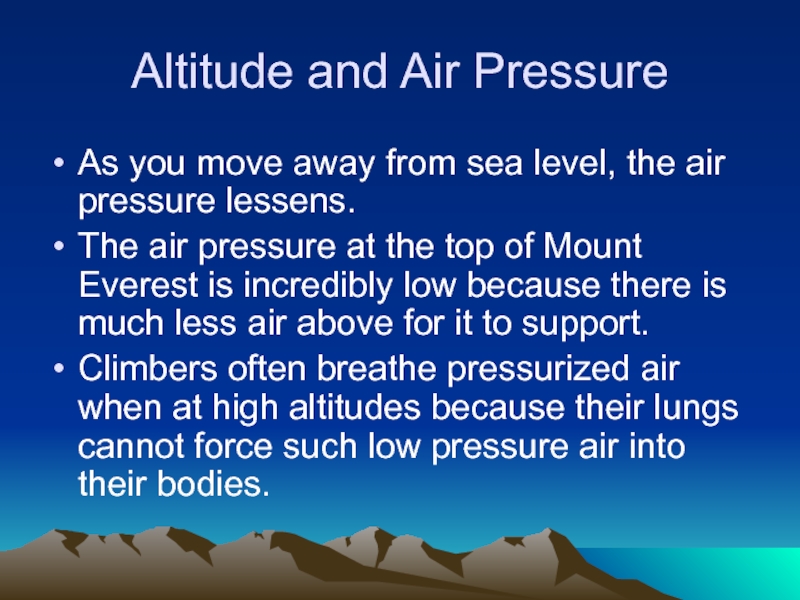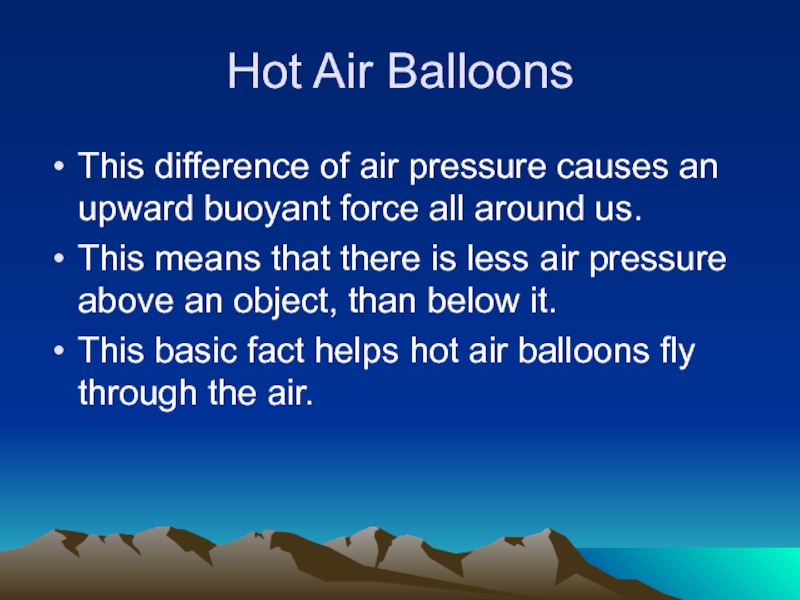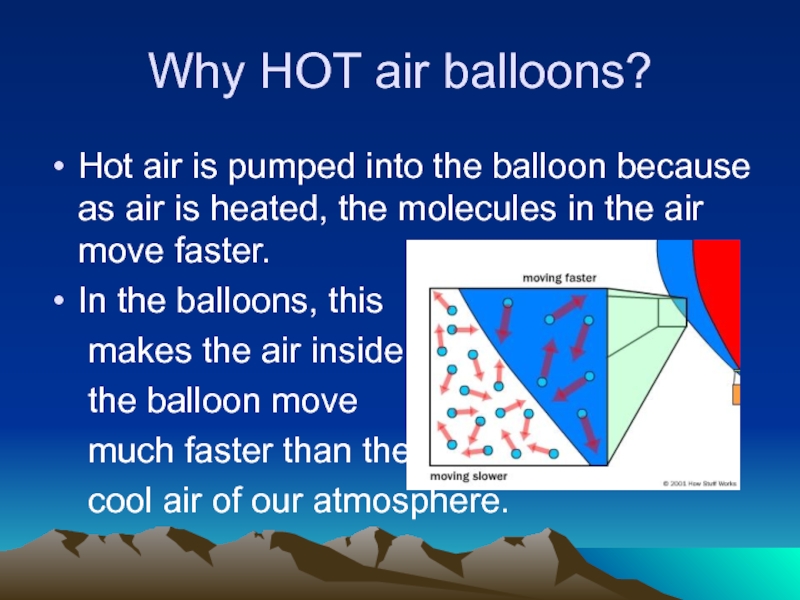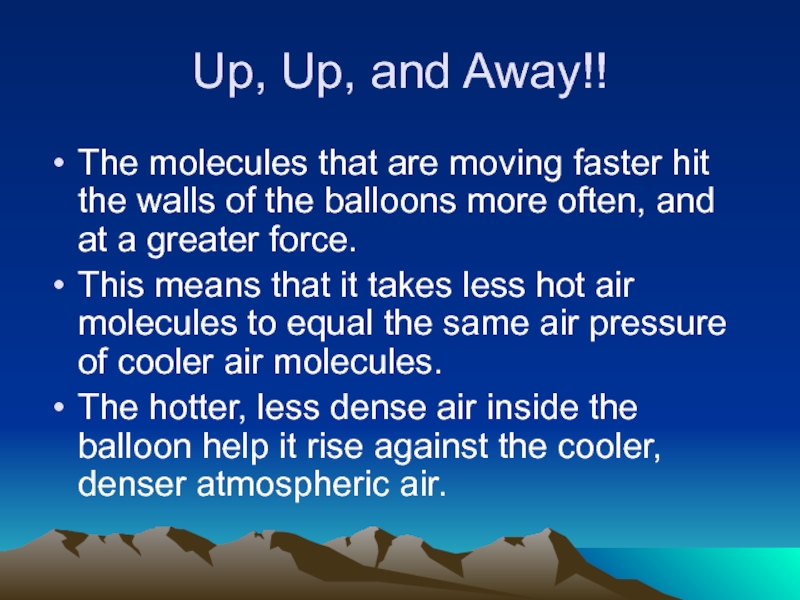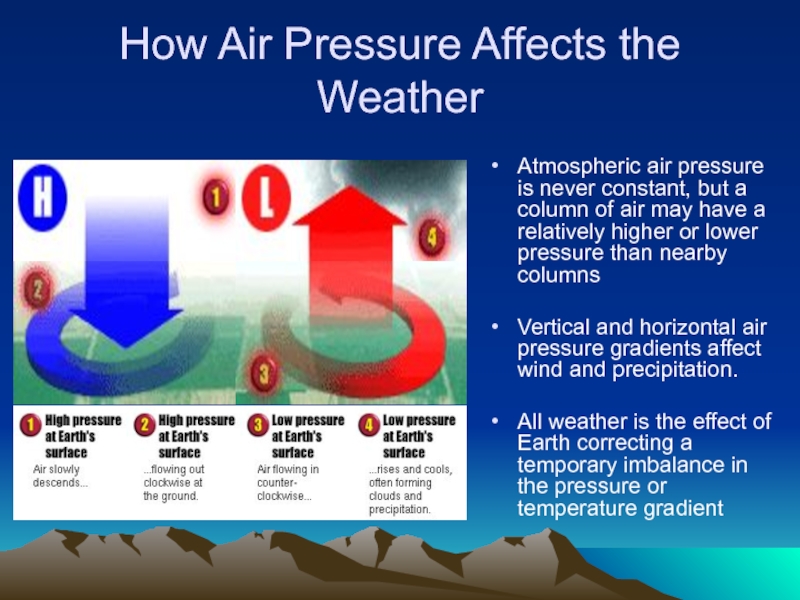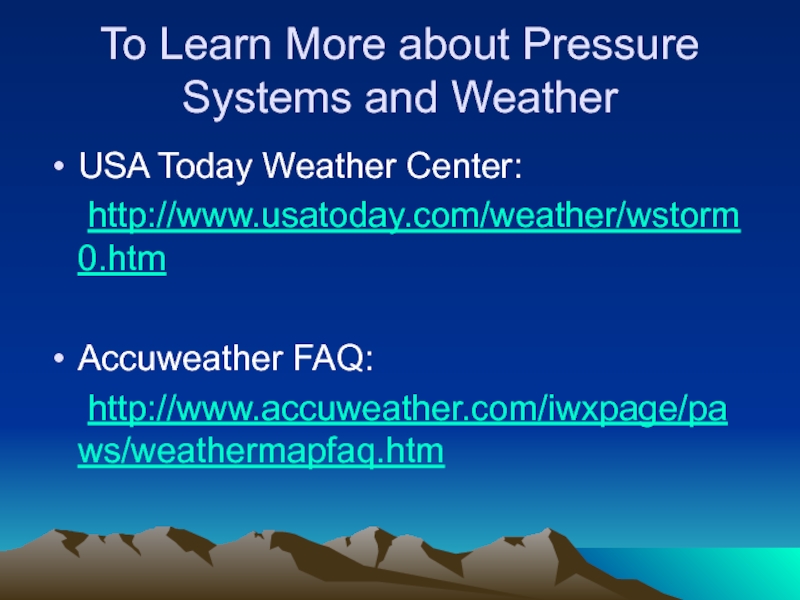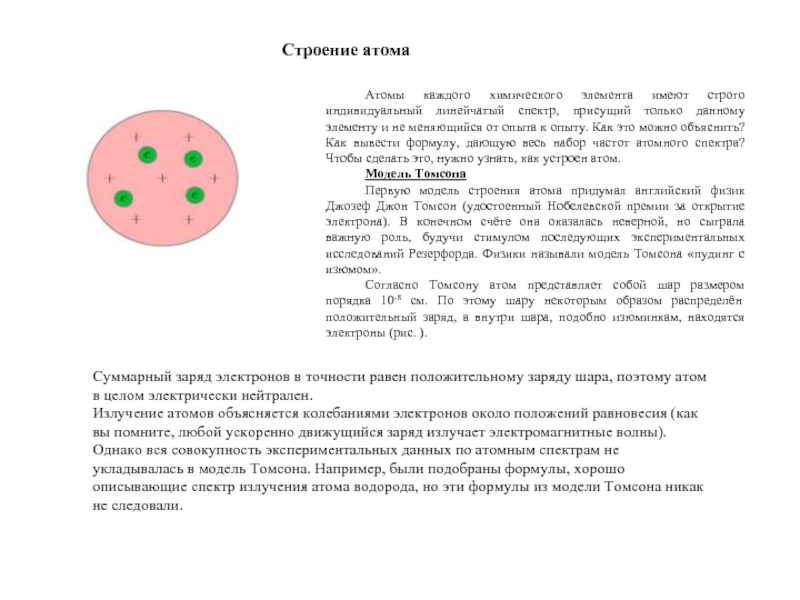- Главная
- Разное
- Дизайн
- Бизнес и предпринимательство
- Аналитика
- Образование
- Развлечения
- Красота и здоровье
- Финансы
- Государство
- Путешествия
- Спорт
- Недвижимость
- Армия
- Графика
- Культурология
- Еда и кулинария
- Лингвистика
- Английский язык
- Астрономия
- Алгебра
- Биология
- География
- Детские презентации
- Информатика
- История
- Литература
- Маркетинг
- Математика
- Медицина
- Менеджмент
- Музыка
- МХК
- Немецкий язык
- ОБЖ
- Обществознание
- Окружающий мир
- Педагогика
- Русский язык
- Технология
- Физика
- Философия
- Химия
- Шаблоны, картинки для презентаций
- Экология
- Экономика
- Юриспруденция
Air Pressure and Hot Air Balloons презентация
Содержание
- 1. Air Pressure and Hot Air Balloons
- 2. Hot Air Balloons!!! Have you ever seen
- 3. An Ocean of Air? The air that
- 4. Air Pressure Because there are millions of
- 5. Don’t Get Pushed Around! Our bodies do
- 6. Gravity In a scenario where only air
- 7. Gravity vs. Air Pressure Gravity pulls downward
- 8. Altitude and Air Pressure As you move
- 9. Hot Air Balloons This difference of air
- 10. Why HOT air balloons? Hot air is
- 11. Up, Up, and Away!! The molecules that
- 12. How Air Pressure Affects the Weather Atmospheric
- 13. To Learn More about Pressure Systems and
Слайд 2Hot Air Balloons!!!
Have you ever seen a hot air balloon?
What makes
it fly through the air?
Air pressure is a big
part of how hot air
balloons work.
Air pressure is a big
part of how hot air
balloons work.
Слайд 3An Ocean of Air?
The air that surrounds us is composed of
many different elements such as oxygen, nitrogen, and hydrogen.
These elements, in their gaseous state, fly around freely.
Every time they bump into each other, or another object, they push using a tiny bit of energy.
These elements, in their gaseous state, fly around freely.
Every time they bump into each other, or another object, they push using a tiny bit of energy.
Слайд 4Air Pressure
Because there are millions of particles in the atmosphere, the
energy released upon interactions adds up quickly.
This is called air pressure.
The air pressure at sea
level is about 1 kilogram per square centimeter.
This is called air pressure.
The air pressure at sea
level is about 1 kilogram per square centimeter.
Слайд 5Don’t Get Pushed Around!
Our bodies do not feel the air pressure
normally because it disperses evenly around us.
Hold out your hand, palm up.
The air pressure exerted on the top of your hand is equal to the pressure of the air pushing up on the bottom of your hand.
The forces cancel out, and you don’t feel the effects of air pressure.
Hold out your hand, palm up.
The air pressure exerted on the top of your hand is equal to the pressure of the air pushing up on the bottom of your hand.
The forces cancel out, and you don’t feel the effects of air pressure.
Слайд 6Gravity
In a scenario where only air pressure exists, everything would be
evenly balanced out.
However, we live on a planet in which gravity plays a huge part.
However, we live on a planet in which gravity plays a huge part.
Слайд 7Gravity vs. Air Pressure
Gravity pulls downward on everything, and its effects
extend to even our atmosphere.
But the air pressure
creates an upward
force to counteract
gravity.
There is more air pressure at sea level because the air at that level has to support all the air above it.
But the air pressure
creates an upward
force to counteract
gravity.
There is more air pressure at sea level because the air at that level has to support all the air above it.
Слайд 8Altitude and Air Pressure
As you move away from sea level, the
air pressure lessens.
The air pressure at the top of Mount Everest is incredibly low because there is much less air above for it to support.
Climbers often breathe pressurized air when at high altitudes because their lungs cannot force such low pressure air into their bodies.
The air pressure at the top of Mount Everest is incredibly low because there is much less air above for it to support.
Climbers often breathe pressurized air when at high altitudes because their lungs cannot force such low pressure air into their bodies.
Слайд 9Hot Air Balloons
This difference of air pressure causes an upward buoyant
force all around us.
This means that there is less air pressure above an object, than below it.
This basic fact helps hot air balloons fly through the air.
This means that there is less air pressure above an object, than below it.
This basic fact helps hot air balloons fly through the air.
Слайд 10Why HOT air balloons?
Hot air is pumped into the balloon because
as air is heated, the molecules in the air move faster.
In the balloons, this
makes the air inside
the balloon move
much faster than the
cool air of our atmosphere.
In the balloons, this
makes the air inside
the balloon move
much faster than the
cool air of our atmosphere.
Слайд 11Up, Up, and Away!!
The molecules that are moving faster hit the
walls of the balloons more often, and at a greater force.
This means that it takes less hot air molecules to equal the same air pressure of cooler air molecules.
The hotter, less dense air inside the balloon help it rise against the cooler, denser atmospheric air.
This means that it takes less hot air molecules to equal the same air pressure of cooler air molecules.
The hotter, less dense air inside the balloon help it rise against the cooler, denser atmospheric air.
Слайд 12How Air Pressure Affects the Weather
Atmospheric air pressure is never constant,
but a column of air may have a relatively higher or lower pressure than nearby columns
Vertical and horizontal air pressure gradients affect wind and precipitation.
All weather is the effect of Earth correcting a temporary imbalance in the pressure or temperature gradient
Vertical and horizontal air pressure gradients affect wind and precipitation.
All weather is the effect of Earth correcting a temporary imbalance in the pressure or temperature gradient
Слайд 13To Learn More about Pressure Systems and Weather
USA Today Weather Center:
http://www.usatoday.com/weather/wstorm0.htm
Accuweather
FAQ:
http://www.accuweather.com/iwxpage/paws/weathermapfaq.htm
http://www.accuweather.com/iwxpage/paws/weathermapfaq.htm
